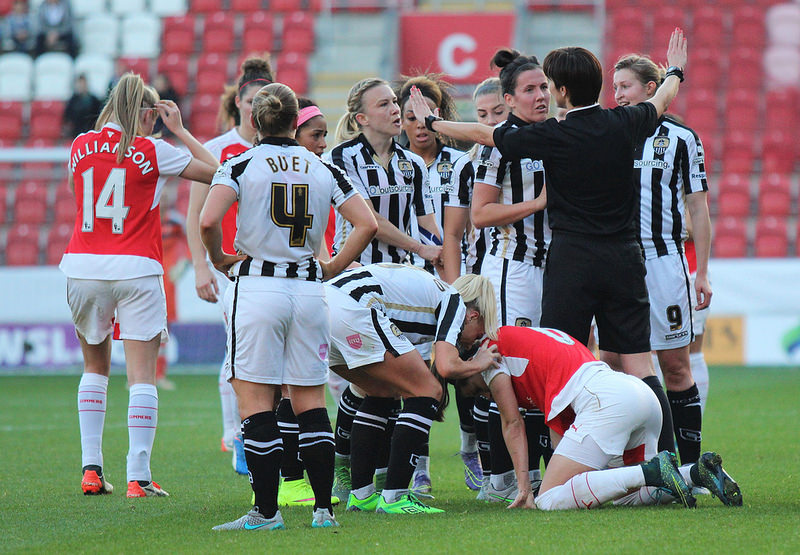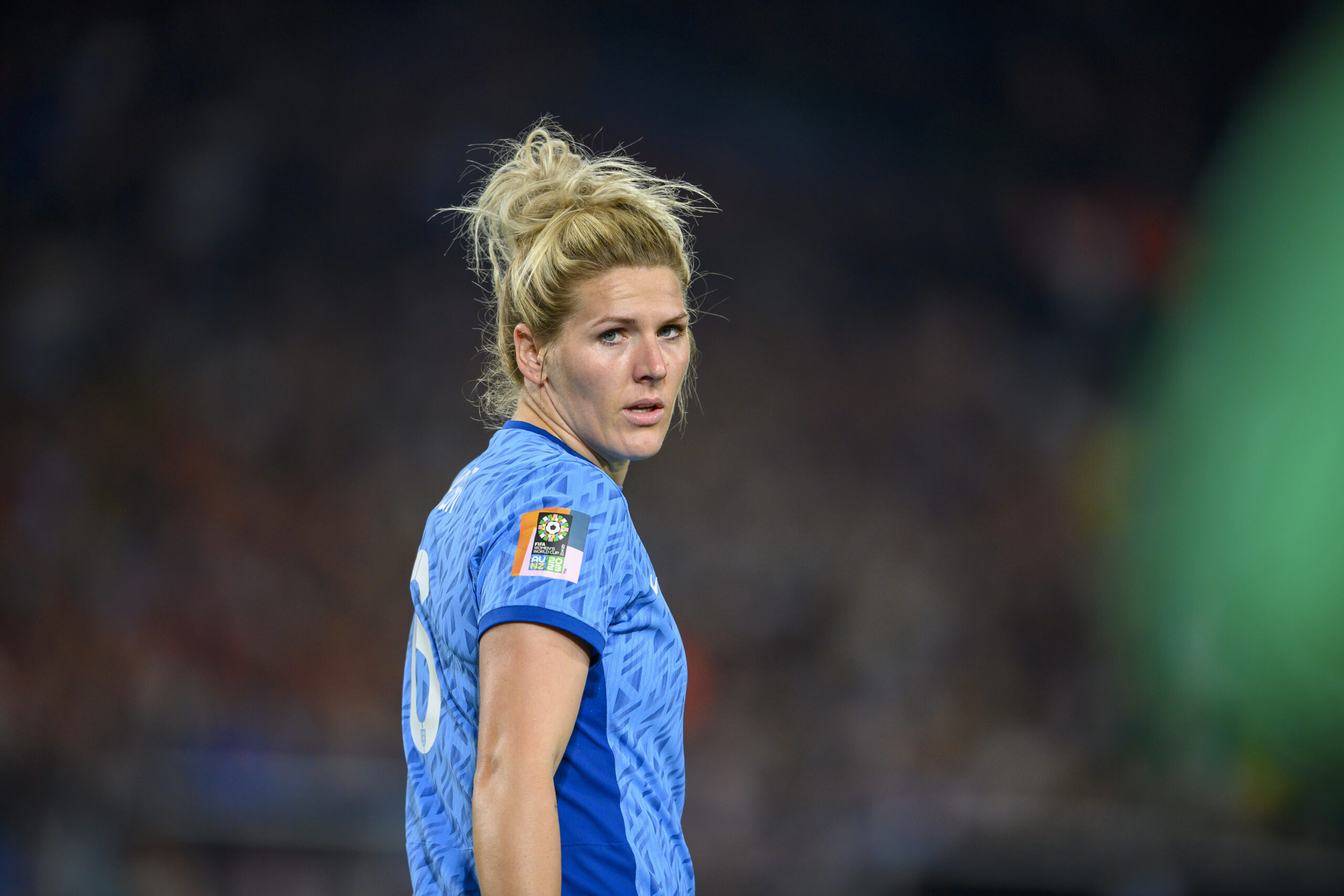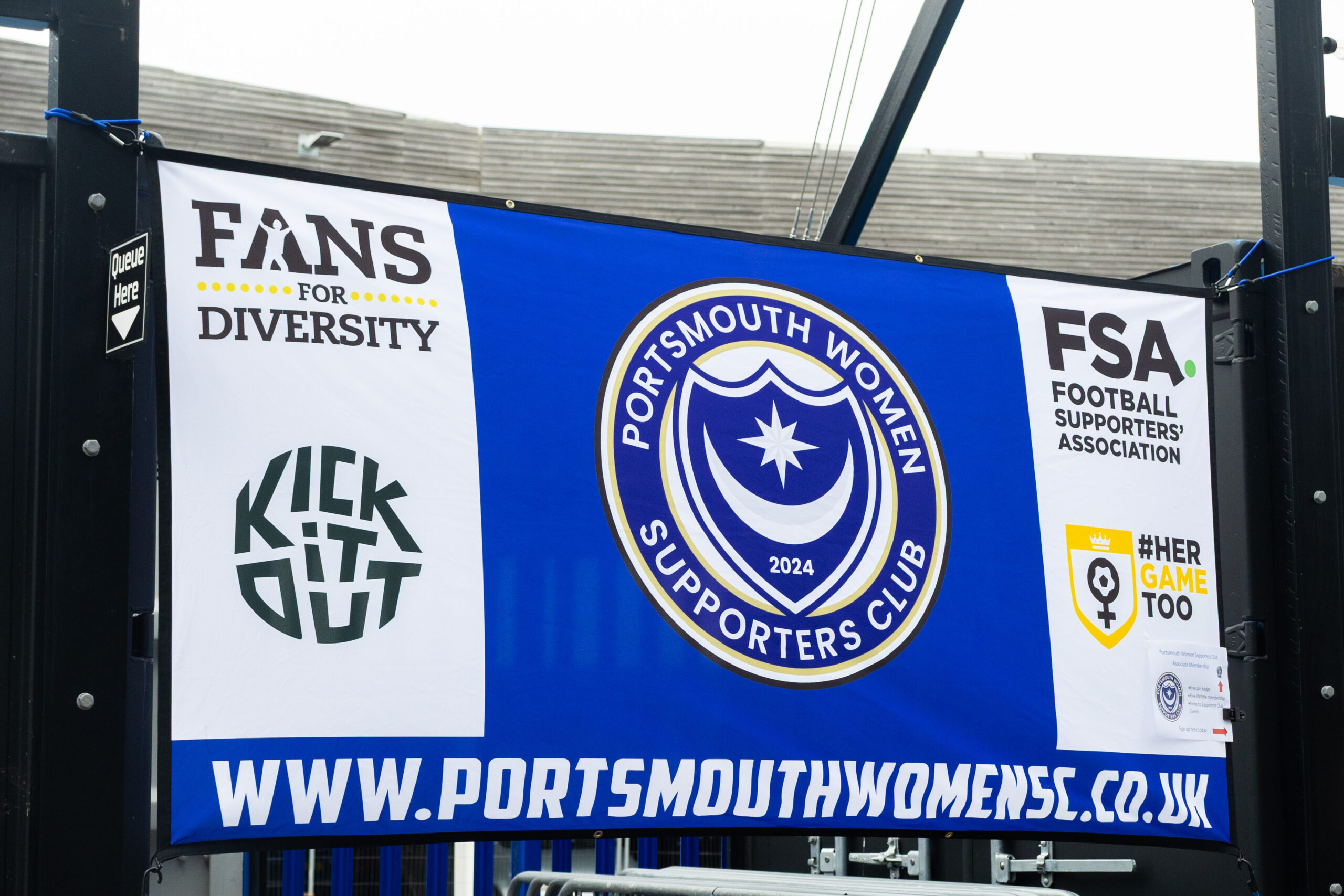“We were given a text that training was cancelled, and to be at the ground for 11 o’clock. We got taken into a room, [where club officials told us] as of half four yesterday, the club no longer existed, it had been liquidated, and that we were all jobless and unemployed as of then. We were all gobsmacked.” (Carly Telford, speaking with Caroline Barker for 5 Live)
The commencement of the 2025-26 season will begin a new chapter in the life of the WSL. A rebrand, new ownership, and new name and logo. But also, a completely new club will partake in the League. London City Lionesses have at last arrived in football’s topflight, a club without any ties with a men’s team. An independent entity, heavily backed by Michelle Kang, and looking to upset the natural order.
Yet they are not the revolutionary outliers many have made them out to be. LCL are not the first independent club to try to take on the WSL. This is a path that has been walked before, and its endgame remains a source of bitterness and sadness in the women’s game to this day.
Lincoln Ladies were one of the founding members of the WSL, and in those first three seasons had established themselves as a stable, mid-table side, able to hold their own against the best. In 2013, they reached the WSL Cup Final, their first Cup Final appearance, where they lost to Arsenal, thanks to late goals from Ellen White and Kim Little.
Lincoln’s rise to the top of the Women’s Football Pyramid was even more remarkable because of the lack of backing from a Men’s Football Team. Despite playing at Ashby Avenue and Sincil Bank, the club held no ties to Lincoln City nor Lincoln United. They were an independent outfit, bankrolled by a Lincolnshire-based businessman and former Lincoln City chairman, Ray Trew.
Since 2006, Ray Trew’s funding of the club, via an £8,000 annual sponsorship deal through his own business, had helped push Lincoln to the brink of promotion. Four second placed finishes in a row followed, until 2010, when they were invited, along with Liverpool, to bypass the Premier League National Division and join the newly formed Women’s Super League. Confidence was high (and in retrospect, grossly misplaced) that, with Trew’s money continuing to flow in, success would soon follow.
“In women’s football terms, we have an almost unlimited budget“, boasted chairman Geoff Adams, on the eve of the inaugural WSL season.
Fiona Green, a consultant who was working with Lincoln at the time to secure their place in the WSL, concurred:
“With the club’s main sponsor making a significant commitment for the next 10 years, we have excellent backing and the finances in place to compete strongly with much higher-profile names than Lincoln.”
Having at last hit the jackpot, Trew was determined to solidify their position. A raid on Leeds United saw forwards Sue Smith and Jess Clarke, plus young talent Rachel Daly, arrive at the club. Rock-solid defender Casey Stoney also joined the squad from Chelsea just before the season’s inauguration. But Trew’s greatest and most controversial play was yet to come.
On the 26 April 2013, Lincoln Ladies dropped the bombshell that they would be moving 40 miles down the A46 to play in Nottingham. They would no longer be an independent outfit, instead combining with Men’s team Notts County, who were under the ownership of Ray Trew.
Trew had not been idle whilst pumping cash into the Lincoln Ladies Dream Machine. In 2010, after Notts County had found itself in major financial difficulties, Trew had stepped in and purchased the club for a £1, paying off their outstanding debts out of his pocket. Now, he had decided to bring all his footballing interests under one roof, at the expense of a furious fanbase in Lincoln who had just seen their women’s team ripped from their home.
Lincoln’s stance was that this was all in the better interests of the club going forward. As chief executive Luke Negus-Hill explained:
“It is about sustainability. We have to ensure we can deliver as per the FA requirements, and with the right backing from Ray Trew and Notts County, we can do that. From a player perspective, the facilities and expertise that are available for the men’s team at Notts County will become available for our team.”
Lincoln’s attendances had averaged around 500 since they joined the WSL. But a move to Nottingham, with access to Meadow Lane’s 19,841-seater stadium, improved training facilities for the players, plus the superior transport links for fans. The club hoped this would allow Notts County to go up another gear in the WSL and finally reach the summit.
On the 16 April 2014, a new dawn for the newly rebranded Notts County Ladies began, with Arsenal arriving at Meadow Lane to kick-off the WSL season. On 26 minutes, Jess Clarke out-paced former team-mate Casey Stoney to race onto a long ball and place her shot past Emma Byrne. However, Alex Scott’s wonder volley from the edge of the box 10 minutes into the second half meant the points were shared.
More stars continued to arrive at Meadow Lane as Trew pushed his hardest to get Notts County to the top. England internationals Ellen White, Laura Bassett and Carly Telford all made the move to Nottingham, and in the 2015 season, it looked to have paid off, as the club reached the FA Cup Final.
In a historical moment for Women’s Football, Notts County played Chelsea in the first ever FA Cup Final to played at the new Wembley Stadium. But it was not to be for the Ladypies, with Ji So-yun’s first half scrambled effort the difference as Chelsea won their first major trophy under Emma Hayes. Then, the bubble burst.
21 April 2017. Notts County were preparing themselves for the upcoming Spring Series, and their opening match against Arsenal.
It’s a match that would never be played.
Two days before the match and the start of new season, the team were summoned to a meeting at the club, where they were told that Notts County Ladies was no more and they were no longer employed by the club, sending shockwaves throughout the WSL
2016 had been a turbulent year for Notts County. The glory of promotion in Trew’s first season of ownership was a distant memory. Nine managers came and went as Notts County coughed and spluttered in League One, until the team fell back to where they had started with relegation at the end of the 2014-15 season. Facing a fierce backlash from the fans off the back of this decline under his ownership, Trew stepped down as chairman and put the club up for sale at the start of the year. It would prove to be the first toppled domino in a chain reaction that led to a second financial collapse of the club.
As Notts County scrabbled around for a new owner, their debts began to escalate. HMRC arrived not once, but twice with winding up petitions, leading to transfer embargos from the Football League. Eventually, in December that year, Trew sold the club to local businessman, Alan Hardy.
Alan Hardy had been keen to take over Notts County right from the off, having had two previous bids turned down by Trew. Having now got himself in the hot seat, his next plan of action was to financially stabilise the club. After months of consulting with the FA, it was determined that the only course of action left to save the club was to liquidate the Women’s Team.
Hardy may have been the one to wield the axe, and it is his name that will be forever written on Notts County Ladies’ tombstone, but in truth, Notts County and Lincoln Ladies were doomed from the start. For as much praise as Trew should get for financially backing a Women’s Team to this degree, it was ultimately misguided and unsustainable. An early clue to the club’s eventual demise can be found as far back as 2006, when Trew’s funding of the team first began.
Speaking after a 6-0 defeat by Charlton Athletic in the FA Cup, Geoff Adams spoke about how they were planning to get the club into the National Division of the Premier League:
“The money for new players is not coming out of the club’s budget but from one of our sponsors, who has pledged up to £10,000 to bring in quality players who can help us gain promotion, then establish ourselves in the National Division.“
The levels of money required to purchase players in the women’s game comes nowhere close to what is needed in the men’s game, however, such costs should still be budgeted for, especially for clubs with no men’s club backing whatsoever. Lincoln’s financial plan for Trew to cover all costs beyond their remit was reckless to the extreme. Rather than be financially cuffed to a club, they were cuffed to an individual. Once the Trew anchor had been thrown overboard, they were dragged into the depths along with him.
Hardy still insists to this day that he was a victim of circumstance; he had to make the decision no-one else wanted to make.
“I am devastated that we cannot continue the Ladies project, but the numbers simply do not stack up’ he explained at the time.
Continuing would have been little short of financial suicide.”
According to Hardy, Notts County had run up debts of excess of £350,000, owed to HMRC and other creditors. To cover the wages of the staff and players of the Ladies Team for the upcoming Spring Series, the club would have needed a further £500,000. With projected revenue at just £28,000, Notts County were being run at a projected loss of -£822,000.
Almost all Women’s Teams were, and still are, run on a loss, however, most are backed by Premier League or Championship clubs, who have sufficient funding from the Men’s side to able to cover that loss. Notts County were neither and now they no longer had Trew’s charity to bail them out. The move to Notts County had failed to generate the prosperous future they had hoped for. The outside money that came into the club failed to lead to growth from within. Unsustainable investment had led to an unsustainable situation. Just as with Fulham’s attempt to go professional far too soon, Trew, with Lincoln and then Notts County, had tried to create a WSL club well before the big money arrived, and without the secure financial foundation needed at that time, the club was paying the ultimate price.
Hardy had inherited a £500,000 black hole, which could only be kept afloat either by his own pocket, or by slashing costs in the Men’s Team to balance the debt. But with the Men’s Team the primary earner for the club, and there being very little money in the Women’s Team to draw from, the latter wasn’t feasible. Attempts to sell the Women’s Team off to another club were in vain, and the FA’s offer to pay off some of the debt came nowhere near rescuing Notts County from their financial plight. Ultimately, it was deemed that one entity had to suffer to save Notts County: The Ladies Team or Hardy’s wallet.
The ramifications of the collapse of Notts County were stark. Players, many of them England Internationals, were left without clubs, some had been made homeless, and staff were without jobs. The fixture list was compromised, with an odd number of teams in the league, one side was forced to miss out every weekend. It was a phenomenon that would take three seasons to resolve.
To get players back into employment, the FA permitted clubs to sign them outside of the now closed transfer window as free agents. Rachel Williams rejoined Birmingham City for a second spell at the club, whilst goalkeeper Telford returned to Chelsea. Such was the rush to get players re-employed, some played for their clubs before the paperwork had been officially completed. The announcement of Louise Quinn’s arrival at Arsenal came three days after she had come off the bench to make her debut in a 0-0 draw away at Sunderland.
Notts County Ladies may have been no more, but the club’s plight was far from over. Pinnacle Advantage Ltd were hounding them for debts in excess of £600,000, a company whose director was Ray Trew. It took another year, and a settlement outside the doors of the High Court of London, before Notts County’s debts were fully resolved and the threat of liquidation was at last dismissed.
To this day, Notts County Ladies remain the only club in WSL history to be liquidated. As new clubs look to invest big in their Women’s Team and push their side to get into the WSL, Lincoln and Notts County represent a cautionary tale for those who try to gamble with money and funds beyond the capacity of the club for the sake of glory that may never arrive.
It’s a lesson London City Lionesses would be wise to heed.
It should be acknowledged, however, that there are some key differences between Lincoln and LCL. Lincoln’s abandonment of their independence led them down the road to ruin. At present, LCL have no need to deviate from their mantra, with strong financial footing through Kang and a pre-established set up that is in a prime location to expand the fanbase and provide a greater ease of access to matches, something Lincoln lacked. Kang’s wealth dwarfs what Trew was pumping into Lincoln, and the improved financial status quo, combined with the exponential growth of interest in the game means that there is now a better return on investment. The black hole has been severely reduced.
Yet, what will define whether London City Lionesses’ time in the WSL is not the balance sheets or the investment, but rather, whether they achieve tangible success. Lincoln and Notts County did not just fail off the pitch, they failed on it as well. They were never promoted from the Northern Division, only receiving a spot in the WSL through invitation. For all the talent that walked into that club in their six-season stay, they never came close to challenging for the title. In their three Cup Final appearances, they lost all three and never scored a goal.
LCL can at least lay claim to the WSL Championship last season, but their hyper-aggressive recruitment ever since holds an eerie parallel to Lincoln and Notts County’s desire to see their WSL Fantasy Team come to life. Kang’s dream team will look good on paper when the team sheets are handed out, but what is the point when they too fail to succeed on the pitch?
And then there is the final question, one that we won’t know the answer to until it is too late. What happens when the money stops?
Kang’s hyper-investment will not last forever. As impressive as things look now, so too did they for Lincoln in 2011, to the extent they saw themselves competing with the best for ten years through Trew’s backing. In the end, they barely made it to seven.
Yes, LCL are not chained to the likes of Reading or Blackburn Rovers, who selfishly chose to relegate their own Women’s Team for seeing no value in investing into them further. But neither do they have the security of a top-flight men’s club to ride out any potential turbulence. Those great institutes long pre-dated Kang’s time in club ownership, and they will continue to do so when her time in the game ends. As long as Kang’s investment exists, so does LCL. But who will pick up the tab when the music stops? Who will sustain the club next?
Notts County Ladies couldn’t answer that question, and by failing to do so, ceased to exist. The balloon had inflated beyond everyone’s control, and when it burst, it devastated the fans, staff and players, leaving a stain on the Women’s Game that has remained ever since.



